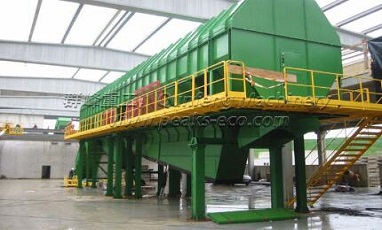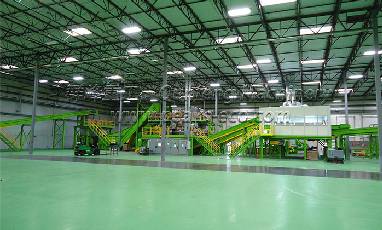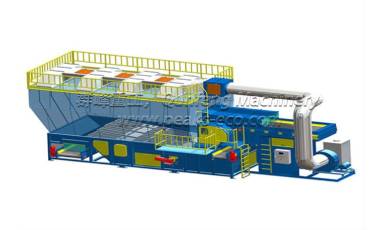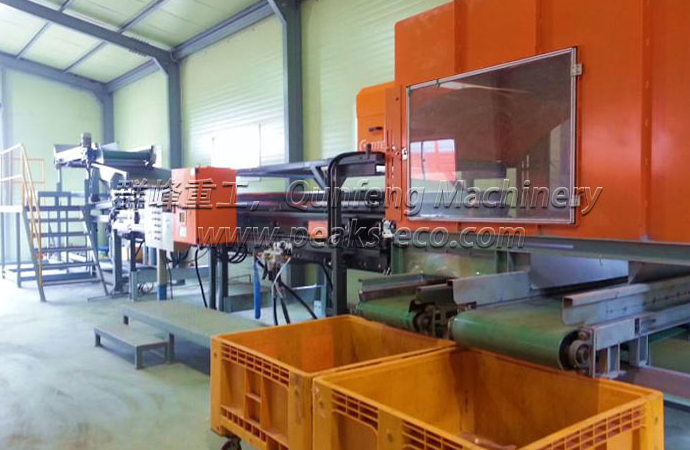The garbage sorting equipment factory shares this article for you.
(1) Screening efficiency
In theory, the fine particles with a particle size smaller than the mesh size can pass through the mesh to become the under-screen product, while the coarse particles larger than the mesh size should be left on the screen to become the product on the screen. However, in the actual operation of the waste treatment equipment company, due to the influence of many factors during the screening process, there will always be some fine particles smaller than the screen hole left on the screen to become the product on the screen, and the fine products in the screen product that have not passed through the screen hole The more particles, the worse the screening effect. The screening efficiency is an index to evaluate the separation efficiency of the screening equipment.
(2) Influencing factors of screening efficiency
① Screening material properties The screening efficiency of materials is closely related to the size distribution, particle shape, water content and mud content of the screening materials.
The particle size distribution of construction waste particles has a great influence on the screening efficiency. The more "easy sieve particles" in the waste, the higher the screening efficiency; and the more "difficult sieve particles" with a particle size close to the sieve pore size, the lower the screening efficiency.
The shape of construction waste spikes also has an effect on the screening efficiency. Relatively speaking, the screening efficiency of spherical, cubic, and polygonal particles is higher; when square or round screens are used, flat or rectangular cubes are screened. When the material is used, the screening efficiency is low. Linear materials, such as waste wires and tubular materials, must be sieved slowly through the "needle lead" with one end facing down. The longer the material, the harder it is to sieve. In the disc sieve, the screening efficiency of this thread will be higher. For flat materials such as plastic film, paper, cardboard, etc., it will be small on the screen surface, forming a "blind zone" and clogging Large screening area, which greatly reduces the screening efficiency of materials.
The moisture content and mud content of construction waste also have a certain effect on the screening efficiency. When the screen hole is small, the external moisture of the waste will make the fine particles clump or attach to the coarse particles and not easy to penetrate the screen; when the screen hole is large, When the moisture content of the waste is high, the activity of the particles is increased. At this time, the water has the effect of promoting the fine particle sieving. The effect of moisture is also related to the mud content. When the mud content in the waste is high, a little water can also cause Fine-grained clumps.
② Performance of screening equipment The screening efficiency of screening equipment is closely related to the effective area of the screen surface. Common screen surfaces include bar screen surface, steel plate punching screen surface, and steel wire braided screen. The effective area of the bar screen surface is small, the screening efficiency is low, the effective area of the woven screen is large, the screening efficiency is high, and the punching screen surface is between the two.
The width of the screen surface is also an important factor that affects the processing capacity of the screening equipment. The length of the screen surface affects screening efficiency. The too-narrow screen surface thickens the waste layer and is not conducive to the fine particles close to the screen surface; the too widescreen surface Make the waste screening time too short, the general width to length ratio is 1: (2.5-3)
The size of the inclination of the sieve surface determines the discharge speed of the product on the screen. Too small an inclination is not conducive to the discharge of the product on the screen; if the inclination is too large, the waste discharge speed is too fast, the screening time is short, and the screening efficiency is low. Generally more suitable The sifting angle is 150~250.
③ Screening operation conditions In the screening operation, attention should be paid to continuous and uniform feeding, so that the waste is spread into a thin layer along the entire width of the screen surface, which not only makes full use of the screen surface but also facilitates the penetration of fine particles, which can improve the processing capacity of the screen and the screen Sorting efficiency. The timely cleaning and maintenance of the screen surface is also an important condition to ensure the screening efficiency.
When the vibration of the screening equipment is insufficient, the materials are not easy to be layered, which makes it difficult to penetrate the screen; when the vibration is too strong, the material is too late to penetrate the screen, and then it is re-vibrated by the person so that the waste quickly moves to the end of the screen surface and is discharged It also makes the screening efficiency not high. Therefore, the vibration frequency and amplitude should be adjusted for the vibrating screen. For the drum screen, it is important to adjust the rotation speed to maintain the vibration level at the most appropriate level.




